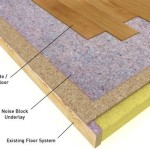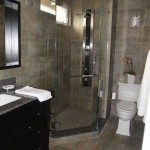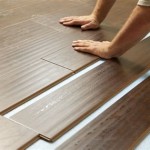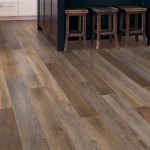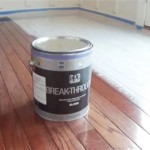Essential Aspects of Installing Bamboo Flooring Over Linoleum
Installing bamboo flooring over linoleum can be a cost-effective and aesthetically pleasing way to upgrade your home's flooring. However, it's crucial to follow specific steps and considerations to ensure a successful installation. Here are some essential aspects to keep in mind:
1. Surface Preparation:
Before installing bamboo flooring, the linoleum surface must be properly cleaned and prepared. This involves removing any dirt, dust, or debris. The linoleum should also be smooth and level, without any uneven areas or bumps. If there are any imperfections, it's recommended to use a self-leveling compound to smooth out the surface.
2. Underlayment:
Installing an underlayment is an essential step to provide additional support and comfort under the bamboo flooring. It also helps to reduce noise and moisture absorption. Choose an underlayment that is specifically designed for bamboo flooring and ensure it is placed correctly according to the manufacturer's instructions.
3. Bamboo Flooring Installation:
When installing bamboo flooring, start from a corner and work your way towards the opposite wall. Use a tapping block and hammer to gently tap the planks into place, ensuring they fit snugly together. Stagger the joints between the planks to create a more durable and aesthetically pleasing floor.
4. Expansion Gap:
Leaving an expansion gap around the perimeter of the room is crucial to accommodate the natural expansion and contraction of the bamboo flooring. The expansion gap should be approximately 1/4 to 1/2 inch wide and can be covered with baseboards or quarter-round molding.
5. Transitions:
If the bamboo flooring is being installed in an area that transitions to another type of flooring, such as tile or carpet, it's important to use transition strips. Transition strips provide a smooth and professional-looking transition between different flooring surfaces and help to prevent gaps or tripping hazards.
6. Moisture Barrier:
Installing a moisture barrier is essential to protect the bamboo flooring from moisture damage. The moisture barrier should be placed under the underlayment and extend up the walls by a few inches. Use a moisture barrier that is specifically designed for flooring applications.
7. Acclimation:
Before installing the bamboo flooring, allow it to acclimate to the room's temperature and humidity for at least 48 hours. This helps to prevent the flooring from expanding or contracting excessively after installation.
8. Adhesive:
In some cases, adhesive may be necessary to secure the bamboo flooring to the linoleum. Use an adhesive that is specifically formulated for bamboo flooring and follow the manufacturer's instructions carefully.
By following these essential aspects, you can ensure a successful installation of bamboo flooring over linoleum, creating a beautiful and durable floor that will enhance the aesthetics and functionality of your home.

How To Install L And Stick Vinyl Flooring Over Existing

How To Install Bamboo Flooring Floated Diy Method

Can I Nail Down Bamboo Flooring

Installing Bamboo Flooring Extreme How To

Installing Luxury Vinyl Floors Over Engineered Hardwood Honey Built Home

How To Install Bamboo Flooring Tongue Groove Over Underlay

How To Install The Last Two Rows Of Flooring

Installing Luxury Vinyl Floors Over Engineered Hardwood Honey Built Home

How To Fix Warped Bamboo Flooring Handy Diy Repairs

Bamboo Flooring
See Also
